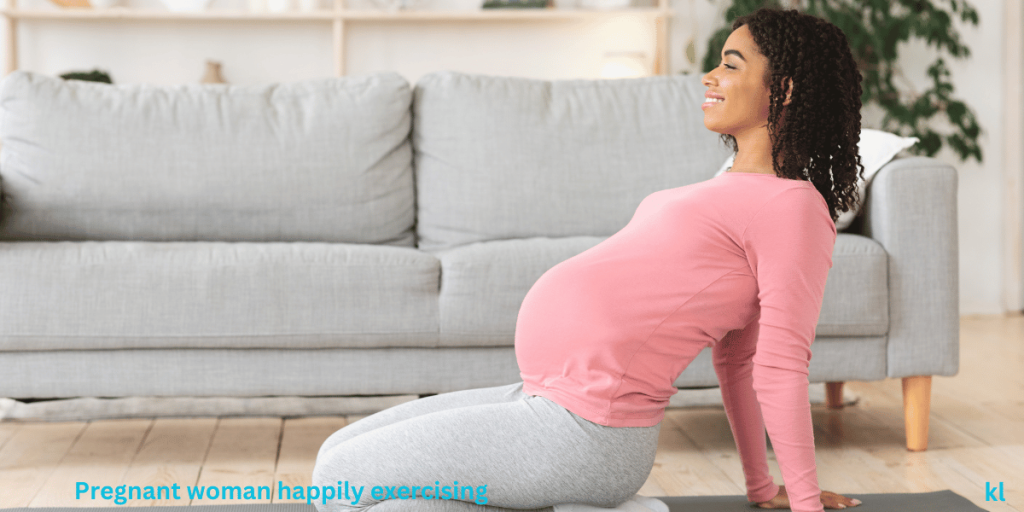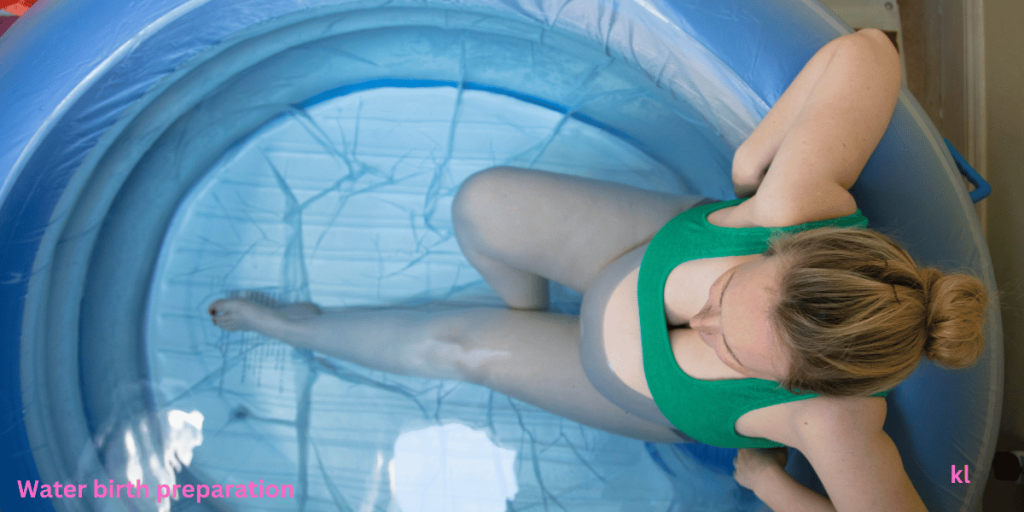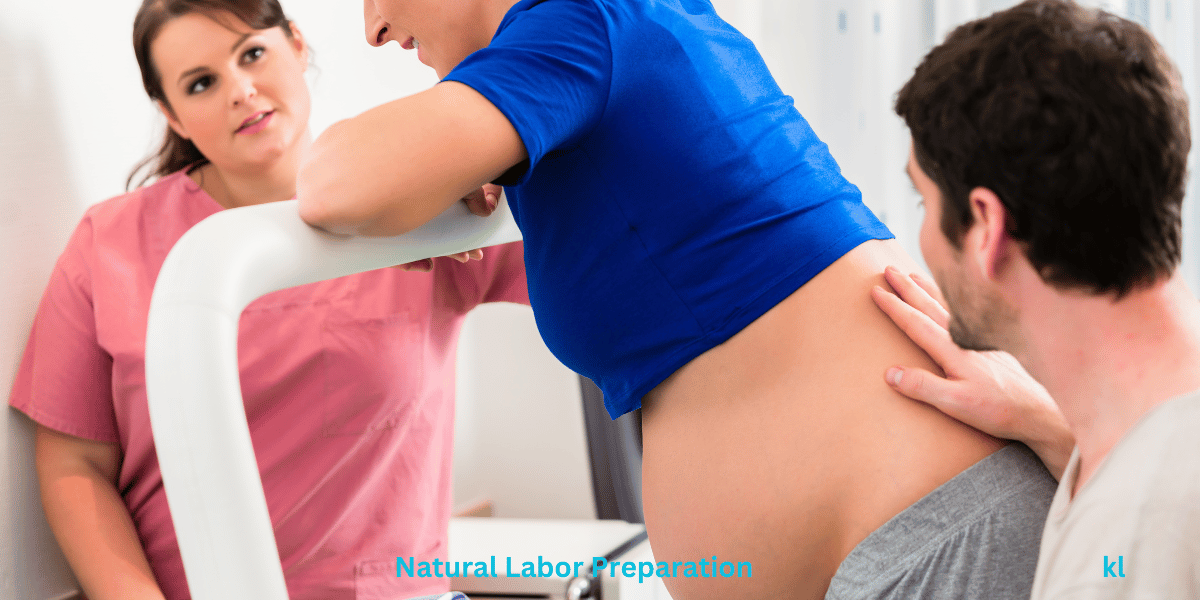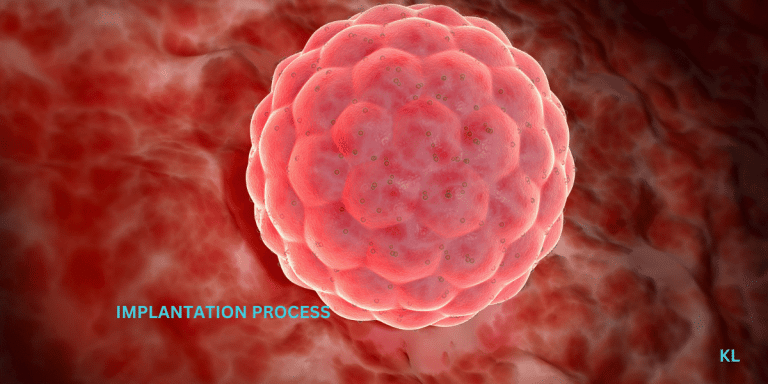Did you know that more than 95% of women worldwide can give birth naturally? Women who also prepare their bodies for natural birth are 65% more likely to have a positive birthing experience. I remember when I first started researching natural birth preparation—it felt overwhelming!
But don’t worry. As someone who’s been through this experience, I can tell you: that a little preparation goes a long way! This guide, Proven Results: Natural Labor Preparation Techniques from Real Moms will help you build strength, confidence, and knowledge for a safe and natural delivery.
Whether learning the best stretches or practicing relaxation techniques, let’s dive into the essentials that can make your birthing journey empowering and fulfilling.
Why Preparing Your Body for Natural Birth Matters
When I first started exploring natural birth, I thought it was just about gritting my teeth through contractions and “going with the flow.” But wow, I was wrong.
Preparing for natural birth is about so much more than that—it’s about building strength, mindset, and confidence to let your body do what it was designed to do.
The benefits of natural labor go beyond the birthing day itself. A shorter recovery period reduced medical interventions, and a deep sense of empowerment from trusting your body is just the beginning.
Let’s talk about the natural birth mindset. This was a game-changer for me. Shifting my focus from fear to empowerment was key. I read empowering natural birth stories—some from women who seemed superhuman to me at first, but over time, I realized they were just like us.
They faced their fears, prepared their bodies, and emerged stronger. Preparation isn’t just about physical readiness, though that’s a big part of it.
It’s about breaking down fears and replacing them with tools—like relaxation techniques and visualization—that make the process less daunting and more empowering.
Physical readiness plays a huge role in how labor unfolds. Think about it: childbirth is like running a marathon. Would you show up to race day without any training? Of course not.
Exercises like prenatal yoga, pelvic floor strengthening, and staying active during pregnancy build the endurance and flexibility your body needs.

These also reduce labor fear because you know your body is ready. Preparing for labor naturally also includes simple habits like hydration, healthy eating, and practicing mindfulness.
There are so many misconceptions about natural birth preparation. One I had to shake was the idea that “natural” means unplanned or chaotic. It’s the opposite! It’s about creating a birth plan and preparing intentionally, so you’re ready for the twists and turns that might come.
And yes, natural birth doesn’t mean perfect or pain-free, but the preparation gives you tools to manage that pain in ways that feel right for you.
In the end, preparing your body and mind for natural birth is about trusting yourself and knowing you’re capable. If you’re considering a natural birth, start today. Read the stories, try the exercises, and build that mindset. You might surprise yourself with what you can do.
Exercises to Strengthen Your Body for Labor
The right prenatal exercises can make a big difference, not only in labor but also in your overall pregnancy experience by achieving strength, flexibility, and stamina. Let’s explore a few that can help you feel more confident and ready for the big day.
1. Prenatal Yoga for Flexibility and Endurance
Prenatal yoga is one of the best exercises for labor and delivery because it improves flexibility, boosts endurance, and teaches you how to breathe through discomfort—all vital skills for childbirth.
Poses like Child’s Pose and Cat-Cow help align your pelvis, while Squats strengthen your legs and open up your hips. Plus, yoga encourages mindfulness, which can calm your mind and reduce anxiety about labor.
As a bonus, many moms find that the breathing techniques learned in yoga are a game-changer during contractions.
2. Kegel Exercises for Pelvic Floor Strengthening
Kegel exercises are simple but powerful. By strengthening your pelvic floor muscles, you’re preparing your body to handle the pressure of delivery and improving recovery postpartum.
To do a Kegel, imagine stopping the flow of urine midstream (but don’t practice while urinating, as this can cause issues).
Aim for 10 reps, three times a day, gradually holding the squeeze longer as you build strength. Strong pelvic floor muscles can also help prevent incontinence and support better control during the pushing phase of labor.
3. Walking and Swimming for Fitness and Stamina
Walking is a classic, low-impact way to stay active during pregnancy. The benefits of walking during pregnancy include improved circulation, better stamina, and gentle strengthening of your lower body.
It’s a great way to keep your pelvis aligned for delivery. Additionally, walking can help to naturally induce labor, especially as you approach your due date.
The combination of movement and gravity encourages the baby to settle into the optimal position for birth, which can stimulate contractions and prepare your body for labor.
Swimming, on the other hand, offers a weightless, full-body workout. It’s particularly beneficial if you’re experiencing back pain, as it relieves pressure while building endurance.

4. Prenatal Strength Training for Stamina
Prenatal strength training—like bodyweight squats or using light resistance bands—helps prepare your legs, back, and arms for labor (and holding your baby afterward!).
Focus on moves that mimic birthing positions for natural labor, such as deep squats, which open the pelvis and strengthen the thighs. Make sure to practice proper form to avoid injury.
5. Exercises for Pelvic Alignment
Pelvic alignment for delivery is key to ensuring an easier labor. Moves like hip bridges or lunges can keep your pelvis open and flexible. Incorporating a birthing ball into your routine also helps improve posture and relieve pressure on the pelvis.
My absolute favorite tool for natural birth preparation exercises is the birthing ball. Birth ball positions can make a massive difference in both pregnancy comfort and optimal fetal positioning.
The simple act of sitting and gently bouncing on a ball for 30 minutes a day can help your baby find the best position for birth
By combining these exercises into your prenatal fitness routine, you’re setting yourself up for a smoother labor and delivery.
Remember to always listen to your body, stay hydrated, and consult your healthcare provider before starting any new workout. Let’s get moving, mama—you’ve got this!
Nutrition Tips for a Healthy Pregnancy and Delivery
What you eat during pregnancy doesn’t just nourish your baby—it also sets the stage for a smoother delivery.
Proper nutrition can strengthen your body, boost energy levels, and even support better labor progression. Let’s dive into the foods, hydration tips, and supplements that make a real difference.
1. Foods for Energy During Labor
Labor can feel like running a marathon, so fueling your body is essential. Foods rich in complex carbohydrates, like whole grains, sweet potatoes, and quinoa, provide steady energy to keep you going. Include lean proteins, such as chicken, eggs, and beans, to promote muscle strength.
Bananas and almonds are excellent snacks for quick energy, and they’re easy to pack for your hospital bag! Maintaining a healthy pregnancy diet full of fresh fruits and veggies also provides key nutrients like vitamin C, which supports tissue repair after delivery.
2. Staying Hydrated for Better Labor Progression
Hydration during pregnancy is critical, especially as you approach labor. Drinking plenty of water helps keep your muscles supple and prevents cramping, which is vital for smooth labor progression.
Dehydration can slow down contractions, making labor more challenging. Aim for at least 8-10 glasses of water a day, and consider electrolyte-rich drinks (like coconut water) during active labor to maintain energy and hydration.
3. Best Foods for Pregnant Women
Certain foods are superstars when it comes to a healthy pregnancy diet. Leafy greens like spinach are packed with iron, which prevents fatigue and supports oxygen transport during labor.
Calcium-rich options like yogurt and fortified plant milk are essential for bone strength and muscle contractions. Omega-3 fatty acids from foods like salmon and chia seeds boost brain development in your baby and support your energy levels.

4. Childbirth Nutrition Guide: Key Supplements
Sometimes, even the best diet needs a little boost. Prenatal vitamins with iron, calcium, and DHA are staples for most pregnant women. Iron prevents anemia, which can cause fatigue and complications during delivery.
Calcium supports strong bones and reduces the risk of high blood pressure. DHA, an omega-3 fatty acid, promotes your baby’s brain and eye development. Always check with your doctor before adding or changing supplements to ensure you’re meeting your unique needs.
5. Quick Tips for Labor Day Nutrition
On the big day, stick to light, energy-rich snacks to avoid feeling too full. Applesauce, toast with peanut butter, or a handful of trail mix are perfect options. Stay hydrated by sipping water or clear fluids, but avoid sugary drinks that could cause an energy crash.
By focusing on these nutrition strategies, you’ll give your body the fuel it needs to handle labor like a pro. Remember, every bite you take is an investment in your health and your baby’s future—so make it count!
Natural Pain Management Techniques for Labor
When it comes to preparing for labor, many moms-to-be are eager to find natural pain management techniques that will help them stay calm, focused, and in control throughout the experience.
While every labor is different, there are several techniques that can significantly reduce pain and enhance comfort, empowering you to approach your birth with confidence.
1. Different Breathing Methods and When to Use Them
Breathing exercises are a cornerstone of natural birth meditation and birth relaxation techniques. They can help calm your mind and relieve tension, providing an effective way to manage contractions.
When I first heard about using breathing techniques during labor, I thought, how much can breathing really help with something as intense as childbirth? But let me tell you, it makes a world of difference.
There are several breathing methods for labor, but one of the most popular is the Lamaze breathing technique. Lamaze emphasizes deep, slow breaths to help manage pain and stay focused.
It’s all about taking slow, deep breaths in through your nose and exhaling gently through your mouth creating a rhythm that helps you stay grounded and relaxed.
I remember sitting on my yoga mat at a birthing class, practicing this rhythm and thinking it felt almost meditative. When labor actually started, that simple, repetitive pattern became my anchor.
Every time a contraction came, I focused on my breathing, and it made the waves of pain feel more manageable.

Another method is hypnobirthing breathing, which focuses on slow, deep breaths while visualizing calm and peaceful images. This can be especially useful when contractions intensify, as it keeps your mind from focusing on the pain.
I’d picture something peaceful, like waves rolling onto the shore, syncing my breaths with the imagery. At one point during labor, when the contractions were particularly intense, I focused on this method and felt my shoulders relax and my mind clear.
It was as if I was giving my body permission to do what it needed to, without resistance.
Here’s the thing—these methods only work well if you practice ahead of time. I didn’t think that little breathing drills at home would stick, but when the time came, my body just knew what to do.
If you’re preparing for labor, I can’t stress enough how important it is to put in the prep work. You’ll thank yourself later, I promise!
2. Massage Techniques for Labor Comfort
I can’t tell you how much massage helped me during labor—it was like hitting the “pause” button on the discomfort for a little while. I’ll be honest, before giving birth, I didn’t think I’d want anyone touching me when I was in pain.
But the moment those contractions kicked in, having my partner step in with some gentle but firm pressure on my lower back was a game changer.
Massage can be a lifesaver for moms in labor. A skilled partner or doula can use perineal massage techniques or simply apply pressure to your lower back, hips, or thighs during contractions to reduce tension. This can help soothe muscle aches and provide a sense of relaxation.

For some women, massage helps release endorphins, the body’s natural painkillers, making it an excellent method for pain relief.
One technique you can try during early labor is birth massage techniques, where your birth partner uses long, firm strokes along your back and shoulders. This can help release tension and relax your muscles. Your partner must be aware of your preferences, as different types of pressure will work better for different people.
3. Acupressure Points for Pain Relief
Acupressure is another powerful tool for natural pain relief during childbirth. This ancient technique involves applying pressure to specific points on your body to release pain-relieving energy.
Acupressure points for pain relief can be found on your hands, feet, and lower back. One of my favorite points was the one on the webbing between my thumb and index finger, known as Hegu (LI4).
My partner would press firmly on this spot during contractions, and I was surprised by how much it helped take the edge off the pain. It didn’t make the contractions disappear (if only!), but it gave me a sense of focus and relief.
Another point we used was located around my inner ankles, near the Achilles tendon. This one called Spleen 6 (SP6), is said to help promote relaxation and even encourage labor progression. During those longer contractions, just having my partner press on these points felt like they were helping me stay grounded.

4. Movement and Positioning During Labor
Natural birth positions can play a significant role in how your body experiences labor pain. Whether you’re standing, kneeling, or lying down, the right position can reduce pressure on your body, relieve pain, and even speed up the labor process.
One position I relied on was squatting during contractions. It felt awkward at first, but it made a noticeable difference. Squatting opened up my pelvis and made me feel like I was helping the baby move down.
Leaning forward on a birthing ball or your partner’s shoulders can also relieve pressure from your back.
Movement during labor is another effective technique. Changing positions frequently can help prevent muscle tension and improve circulation, leading to greater comfort during contractions.
Walking, swaying, or even gently dancing can help ease discomfort. Be sure to move as much as possible to keep the pain at bay!
Here’s my best tip: don’t feel like you have to stick to one position. I changed positions a lot—sometimes I was kneeling, other times I leaned on the bed, and for a while, I just swayed in my partner’s arms. Every contraction is different, and what feels right in one moment might not work for the next.
5. Hydrotherapy and Water Comfort Measures
Water comfort measures like water birth preparation can make a world of difference when it comes to pain relief. Many women swear by the soothing effects of water during labor, whether it’s in a shower, a birthing tub, or a warm bath.
The water helps to relax your muscles and reduce the intensity of contractions. The buoyancy of water can also make it easier to move around, easing the pressure on your joints and providing comfort during contractions.
If a full-water birth isn’t your plan, simply using the shower or soaking in a warm bath can still provide great relief. Warm water helps increase blood flow, easing pain and relaxing your body.
All of these methods, combined with a positive mindset and support from your team, will empower you to face your natural birth with confidence and strength.

Creating Your Natural Birth Support System
When preparing for a natural birth, having the right support system in place is essential to a smooth and empowering experience. This support system includes your healthcare provider, birth team, and your partner or chosen support person.
Each of these roles plays a unique part in ensuring that your labor experience aligns with your preferences and needs. That’s why all these considerations should be documented clearly in your birth plan—a crucial tool to communicate your wishes to everyone involved in your care.
Final Weeks Preparation Checklist for a Natural Birth
As you approach the final weeks of pregnancy, preparing for natural birth becomes a mix of mental readiness and practical planning.
There’s a lot to think about, but with the right preparation, you’ll feel empowered and ready when labor begins. Here’s a checklist to guide you through those last few weeks:
1. Essential Items for Natural Birth
Your natural birth plan template will be one of the most important things to have ready. This document outlines your preferences for labor and delivery, from pain management choices to preferred birth positions.
Make sure it’s shared with your healthcare provider and anyone else involved in your birth, like a doula or your partner.
A natural birth toolkit can also be incredibly useful. It might include items like essential oils, a birthing ball, and your favorite playlist.
Consider packing a bag for labor that includes some essentials like comfortable clothing, your birth plan, and anything else that helps you feel relaxed and confident.
2. Signs of Approaching Labor
Knowing the signs of labor can help you feel more in control when the big day arrives. These signs include regular contractions, water breaking, or the appearance of a “bloody show.”
As you near the end of your pregnancy, try to familiarize yourself with these signs so you can better gauge when it’s time to head to the hospital or birthing center.
Remember, the early signs of labor can sometimes be subtle, so it’s a good idea to keep track of any changes in your body and don’t hesitate to reach out to your provider if you’re unsure.
3. Last-Minute Body Preparation Tips
As your body approaches labor, it’s important to focus on exercises and activities that help prepare you physically. Labor preparation exercises like pelvic tilts, squats, and prenatal yoga can help ease tension and open your pelvis for a smoother delivery.
In addition, staying active is key. Gentle walking or swimming can improve stamina and help keep your body in shape for labor. If you haven’t already, now is a great time to practice breathing techniques like those used in Lamaze or hypnobirthing to manage pain and stay calm during labor.
Lastly, be sure to focus on hydration. Dehydration can slow down labor and leave you feeling fatigued. Keep sipping water to stay energized.
4. Emergency Backup Plans
While you may have a detailed natural birth plan, it’s also essential to have a backup plan. Things don’t always go as planned, so discuss potential interventions with your provider, such as what happens if you need a C-section or epidural.
This is also a great time to prepare your birth support team (doula, partner, etc.) for any changes to the plan. Make sure they understand how you feel about different interventions and what your preferences are in case of an emergency.
5. Documentation and Hospital Bag Essentials
Don’t forget to prepare your hospital bag essentials. You’ll want to pack everything you need for the hospital or birthing center, such as comfortable clothes, toiletries, and anything that will make your stay more comfortable.
It’s also essential to bring important documents like your birth plan, insurance information, and any medical paperwork you may need. Your support team should also have copies of your birth preferences, in case you need extra support while you’re busy focusing on labor.
Bonus: Natural Birth Recovery Tips
Although recovery might feel like the last thing on your mind as you approach labor, it’s worth thinking ahead about how you’ll care for your body after delivery.
Make sure you have natural birth recovery tips in mind, such as the importance of rest, proper nutrition, and pelvic floor exercises. Strengthening your pelvic floor muscles with Kegel exercises can help you recover faster after childbirth.

Remember, preparing for natural birth is a journey, not a destination! By implementing these physical and mental preparation techniques, you’re already taking incredible steps toward your goal of a natural birth experience.
Trust in your body’s innate wisdom and the preparation you’ve done. You’ve got this, mama!







